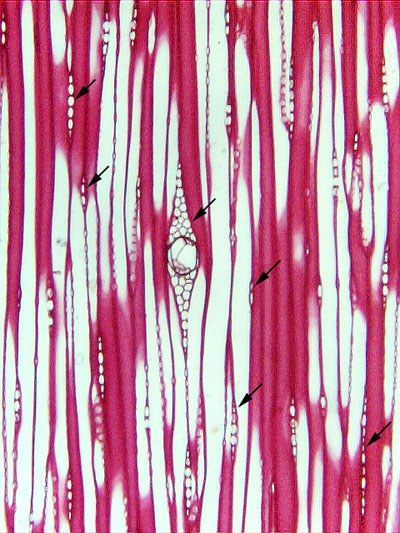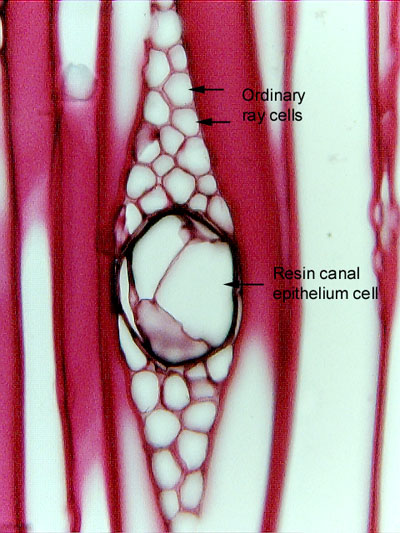 Fig.
15.2-2. Tangential section of wood of
white pine (Pinus strobus). In this view, imagine that we have peeled the
bark off the tree and are now looking toward the center of the trunk–if the
wood were transparent, we would be able to see all the way to the pith. As in
all conifers, most rays here (some are indicated arrows) are uniseriate
and vary from being only two cells tall to many cells tall (lower right corner).
The center ray is wider than the others because it has a resin canal running through it. Because
this is a tangential section, the rays are running directly away from us, back
into the screen. The resin canal here would be running toward the pith.
All the vertical, elongate cells are tracheids of
the axial system.
Fig.
15.2-2. Tangential section of wood of
white pine (Pinus strobus). In this view, imagine that we have peeled the
bark off the tree and are now looking toward the center of the trunk–if the
wood were transparent, we would be able to see all the way to the pith. As in
all conifers, most rays here (some are indicated arrows) are uniseriate
and vary from being only two cells tall to many cells tall (lower right corner).
The center ray is wider than the others because it has a resin canal running through it. Because
this is a tangential section, the rays are running directly away from us, back
into the screen. The resin canal here would be running toward the pith.
All the vertical, elongate cells are tracheids of
the axial system.
This high
magnification view shows the many ordinary ray cells
(all parenchyma cells) and the larger epithelium cells
of the resin canal.